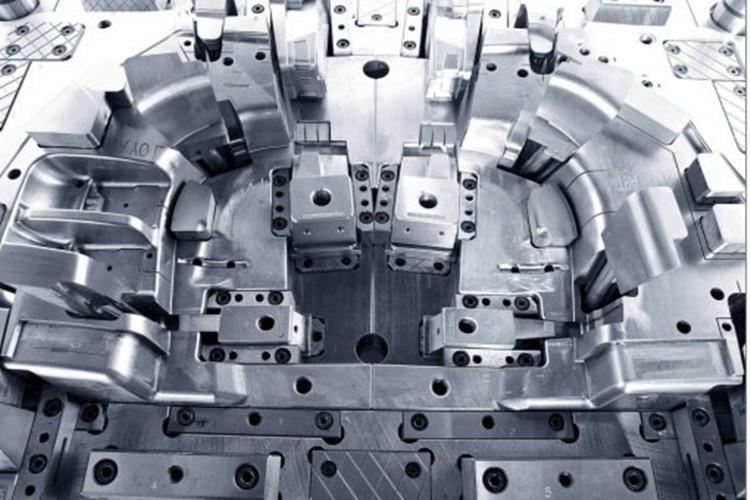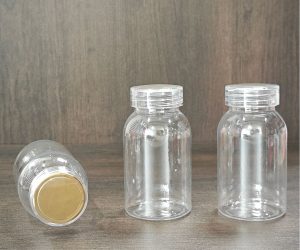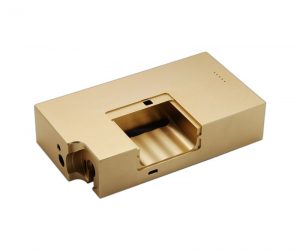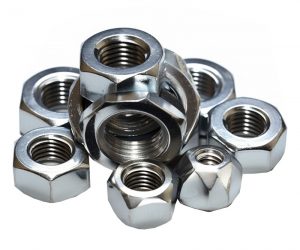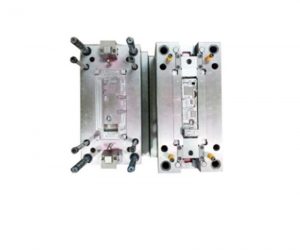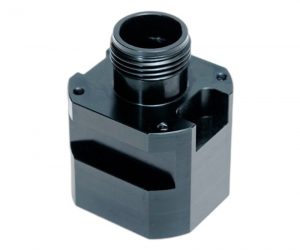Introduction
What is Co - injection Molding?
Co - injection molding, also known as sandwich injection molding, is a specialized plastic injection molding process. In this process, two or more different types of materials, often a core material and a skin material, are injected into a mold cavity in a sequential or overlapping manner.
The basic working principle is as follows: First, the skin material is injected into the mold cavity, forming a thin outer layer. Then, the core material is injected, filling the interior of the part. Finally, more skin material may be added to completely encapsulate the core material. For example, in the production of a car interior component, a rigid and strong material like polypropylene (PP) could be used as the core to provide structural integrity, while a soft - touch material such as thermoplastic elastomer (TPE) is used as the skin to enhance the tactile experience. This creates a part with a combination of properties from both materials.
Importance in the Manufacturing Industry
In the manufacturing industry, co - injection molding holds a significant position. It plays a crucial role in enhancing part performance. By combining materials with different properties, manufacturers can create parts that have improved strength, durability, and aesthetics. For instance, in the automotive industry, co - injection molded parts can be used to reduce weight while maintaining high strength, which is essential for fuel efficiency and overall vehicle performance.
Moreover, co - injection molding is a cost - effective solution. It allows the use of less expensive core materials while still providing a high - quality outer surface. This reduces material costs without sacrificing the quality of the final product. Additionally, it can simplify the manufacturing process by producing a single, multi - functional part instead of multiple parts that need to be assembled later, thus saving on assembly costs as well. All in all, co - injection molding is a technology that offers a balance between performance and cost, making it highly valuable in modern manufacturing.
Challenges and Solutions in Co - injection Molding
Material Compatibility
One of the major challenges in co - injection molding is ensuring material compatibility. When combining different materials, issues such as poor adhesion between the core and skin materials can arise. For example, if the surface energy of the two materials is too different, they may not bond well, leading to delamination in the final product.
To solve this problem, material selection is crucial. Manufacturers should choose materials that have similar chemical structures or use adhesion promoters. Some companies have developed special grades of plastics that are designed to be compatible with a wide range of other materials for co - injection molding. Additionally, surface treatments can be applied to the materials before injection to improve adhesion. For instance, plasma treatment can modify the surface chemistry of a material, enhancing its ability to bond with another material.
Process Control
Precise process control is essential in co - injection molding. Controlling parameters like temperature, pressure, and injection speed accurately can be quite challenging. If the temperature is not properly regulated, it can cause the materials to degrade or not flow correctly. For example, too high a temperature for the core material might lead to over - melting, while too low a temperature for the skin material could result in poor filling of the mold cavity.
To address these challenges, modern injection molding machines are equipped with advanced control systems. These systems can monitor and adjust the temperature, pressure, and injection speed in real - time. For example, they can use sensors to measure the temperature of the molten materials at different points in the injection process and then automatically adjust the heating elements to maintain the desired temperature. Additionally, operators need to be well - trained to set the initial parameters correctly based on the materials and the part design. They should also be able to make on - the - spot adjustments if any deviations are detected during the molding process.
Mold Design Complexity
Mold design in co - injection molding is more complex compared to traditional injection molding. The mold needs to accommodate the injection of multiple materials, which requires careful design of the gating system, flow channels, and cooling channels. For example, the gating system must be designed to ensure that the skin and core materials are injected in the correct sequence and amount. If the gating is not designed properly, it can lead to issues such as uneven material distribution or premature solidification.
Advanced mold design techniques and simulation software can help overcome these challenges. Simulation software can predict the flow of the materials in the mold cavity, allowing designers to optimize the mold design before actual production. They can test different gating systems, flow channel layouts, and cooling channel configurations to find the best design for a particular part. For instance, by using simulation software, designers can identify areas where the materials might not flow evenly and make adjustments to the mold design, such as changing the size or shape of the flow channels, to ensure uniform material distribution.
Yigu Technology's View
As a non - standard plastic metal products custom Supplier, Yigu Technology highly values co - injection molding. This technology aligns perfectly with our commitment to meeting diverse customer requirements. By leveraging co - injection molding, we can combine different materials precisely according to the design, achieving unique product features. For example, we can use a high - strength plastic as the core and a heat - resistant material as the skin for products that need both structural support and heat - resistance.
In terms of cost - control, co - injection molding allows us to use cost - effective core materials while maintaining a high - quality appearance with a better - performing skin material. Our experienced team can also optimize the process to ensure high - quality production with minimal waste. We believe that co - injection molding, with its ability to enhance product performance and cost - effectiveness, is a key technology for us to provide outstanding customized solutions to our customers.
FAQ about Co - injection Molding
What are the typical applications of co - injection molding?
Co - injection molding has a wide range of applications across various industries:
- Automotive Industry: It is used for manufacturing interior components like dashboards, where a rigid core material provides structural support, and a soft - touch skin material enhances the tactile experience. Bumpers are also often made using co - injection molding, with a high - impact - resistant core for strength and a durable outer layer for aesthetics and weather resistance.
- Electronics: In the production of electronic device housings, such as those for smartphones and tablets. A high - strength core material can protect the internal components, while a flame - retardant skin material adds an extra layer of safety.
- Medical Field: For items like syringe barrels. The core can be made of a cost - effective plastic, and the skin can be a biocompatible material that comes in contact with the medical fluid or the patient's body.
- Consumer Goods: Products like toothbrush handles. The core provides the necessary stiffness, and the skin can be made of a rubber - like material for a better grip.
How to determine the optimal ratio of skin layer to core layer materials?
Determining the optimal ratio of skin layer to core layer materials is crucial for the performance of the final product:
- Experimental Approach: Conduct a series of trial - and - error experiments. Start with different ratios and test the mechanical properties, such as tensile strength, impact resistance, and surface finish of the molded parts. For example, in a study on co - injection molded parts for a specific application, researchers found that a 30:70 ratio of skin to core material provided the best balance between cost and strength.
- Simulation Analysis: Use advanced simulation software like Moldex3D. These software can predict the material flow, distribution, and the resulting part properties based on different skin - to - core ratios. By inputting the material properties, mold geometry, and processing parameters, manufacturers can virtually test different ratios and choose the most suitable one before actual production.
- Experience and Industry Standards: Rely on the experience of engineers and industry - established standards. In some cases, industries have developed general guidelines for specific applications. For instance, in the production of certain consumer goods, an average ratio of 20 - 30% skin layer to 70 - 80% core layer has been found to work well in terms of cost - performance.
What are the key factors to consider in mold design for co - injection molding?
Mold design in co - injection molding requires careful consideration of several factors:
- Flow Channel Design: The flow channels for the skin and core materials need to be designed to ensure smooth and even flow. The cross - sectional area, length, and shape of the channels can affect the material flow rate and pressure distribution. For example, a larger cross - sectional area for the core material flow channel can help reduce the pressure drop during injection.
- Gate Location: The location of the gates, through which the materials enter the mold cavity, is critical. Improper gate location can lead to uneven material distribution, weld lines, or short - shots. Simulation software can be used to analyze different gate locations and optimize them for the best material filling pattern.
- Mold Structure: The mold structure should be able to withstand the high pressures during injection and support the sequential injection of different materials. It may need to have special features like movable cores or split - mold sections to accommodate the complex injection process. Additionally, the cooling channels in the mold should be designed to ensure uniform cooling of the multi - layer part, preventing warping and other defects.
